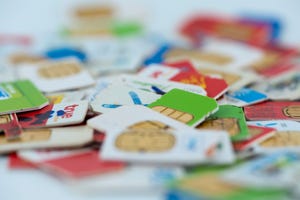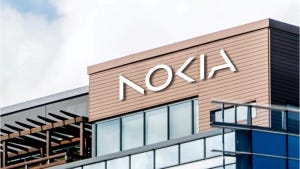How private wireless might be used in LA for the 2028 Olympics
Kamal Sadarangani is the head of telecommunications for LA28, the private nonprofit that's helping to organize the 2028 Olympics and Paralympics in Los Angeles, California. 'Do I have a solution in mind? No, not yet,' he said of a private wireless network.

"It cannot fail," said Kamal Sadarangani, the head of telecommunications for LA28, the private nonprofit that's helping to organize the 2028 Olympics and Paralympics in Los Angeles, California.
Sadarangani was speaking of the network that the games will use for internal operations. That network must handle everything from officials' communications to the broadcasting system distributing the games.
"Do I have a solution in mind? No, not yet," he said, explaining that he's currently evaluating all the telecommunications options in LA, with an eye toward what the games can use and what will need to be built. He suggested that partnerships between private companies and public operations will probably be a major element of LA28's approach to telecommunications in general.
"It can be done in a collaborative way," he said.
And what of a private wireless network? After all, the 5G industry is in a lather over the opportunities created by new private wireless networking technologies – and presumably that kind of solution would be ideal for an internal Olympics network spread across a city the size of LA.
"Do I see a big role for private wireless? Yes, I do. How big? I don't know," Sadarangani said. "That's to be determined."
He said LA28 is currently looking at the work in Paris for the 2024 Olympics there to see what officials decide to do. "How do we build on that success?"
From startups to T-Mobile
Sadarangani said he has enjoyed a varied career in telecommunications that stretches from 1G to 5G. He's managed his own distributed antenna system (DAS) and small cell business, but has also held leadership positions at some of the nation's biggest wireless network operators.
"I've always been passionate about telecommunications," he told Light Reading.
According to his LinkedIn profile, Sadarangani counts two long stretches at T-Mobile, ending with a role as the operator's regional director for network business development in 2022.
But it's the move to LA28 earlier this year that's gotten him energized. "This is a once in a lifetime opportunity," he said. "It's the cherry on top of a telecommunications career."
It also doesn't hurt that Sadarangani attended the University of Southern California and remains a Trojans fan. "It's a very unique opportunity," he said.
Getting off the ground
Considering Sadarangani still has four full years ahead of him before the start of the 2028 Olympics, he's still very much at the beginning of his work. "It's still in that strategy and planning phase," he said of LA28's telecommunications progress. "It's in the early stages."
Importantly, Sadarangani said that LA already has many of the massive venues necessary for the Olympics and doesn't plan on any major building programs to support the games. The LA28 organization is privately funded through domestic sponsorships, licensing, hospitality, ticketing, philanthropy and the International Olympic Committee, and it counts a budget with a $615.8 million contingency.
Similarly, in terms of telecommunications, Sadarangani said he's planning to use the city's existing infrastructure to the degree it will work for his needs.
"From a telecommunications standpoint my view is, how do I leverage the existing assets we have?" he said, adding that a big part of LA28's strategy involves longevity and reuse, rather than a build-it-once and then never-use-it-again approach.
Broadly, the city's publicly available networks will need to support 10 million spectators and 12,000 athletes from countries around the world. The organization's internal communications network will need to eventually support thousands of employees and around 100,000 volunteers and contractors. "That's a big, big undertaking," Sadarangani said.
"It's really trying to understand what is that best solution for us, come 2028," he added, noting that LA28 is hoping to find tried and true technologies, but also ones that will make a difference.
The private wireless angle
Officials in the private wireless industry have promised that the technology can meet many of the LA28 requirements, including for high-bandwidth services, security and broad coverage. Private wireless in general is intended to provide customers with dedicated services, meaning that private networks are not subject to the sharing requirements of public networks.
But there are plenty of private networking iterations. For example, some companies promise to sell private slices of public networks. In that kind of setup, users would access public infrastructure but their communications would be conducted over a private slice – that way they don't have to worry about getting booted off the network in times of congestion.
But other private wireless networks are those built from the ground up for a specific use case. Those would presumably be more expensive but they can also be deployed in specific ways, including in locations where there are no public networks.
Broadly, the private wireless opportunity has galvanized interest in a variety of telecommunications companies, from network operators like Verizon to equipment suppliers like Nokia to cloud companies like Amazon. However, the space hasn't developed as quickly as some suppliers had initially expected. But that might change in the months and years to come as the market matures.
About the Author(s)
You May Also Like












